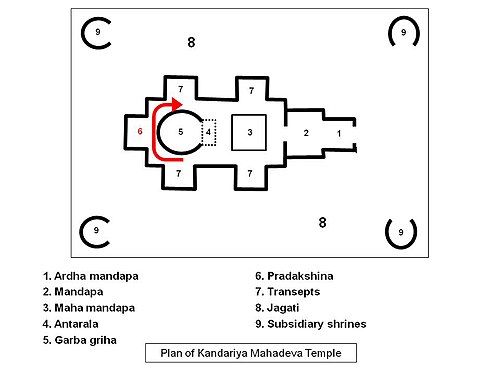
Hindu temples are built in the panchayatana (Sanskrit: पञ्चायतन, romanized: pañcāyatana) layout: the main shrine is surrounded by four subsidiary shrines.[1][2] The origin of the name are the Sanskrit words pancha (five) and ayatana (containing), referring to a "five-shrined" layout.[3][4]
Generally, Hindu temples are built along a west-east axis. The four subsidiary shrines are located at the north-east, south-east, south-west, and the north-west.
- ^ "Khajuraho, India | World Heritage Site". The-world-heritage-sites.com. 1986-11-28. Archived from the original on 2014-03-17. Retrieved 2012-10-11.
- ^ Tadgell, Christopher (2015-10-23). The East: Buddhists, Hindus and the Sons of Heaven. Routledge. p. 889. ISBN 978-1-136-75384-8.
- ^ Asher, Frederick M. (2020-02-11). Sarnath: A Critical History of the Place Where Buddhism Began. Getty Publications. p. 59. ISBN 978-1-60606-638-6.
- ^ Dalal, Roshen (2014-04-18). The Religions of India: A Concise Guide to Nine Major Faiths. Penguin UK. p. 906. ISBN 978-81-8475-396-7.